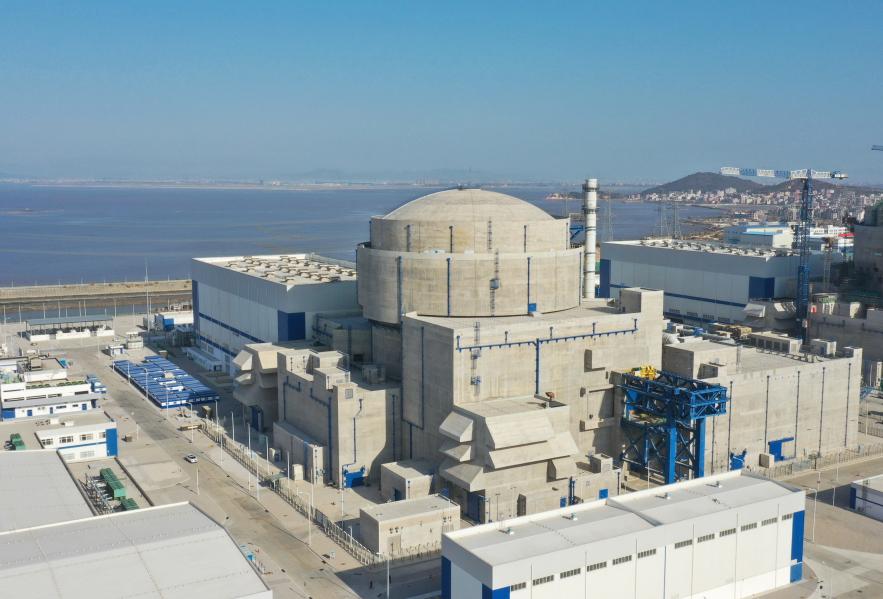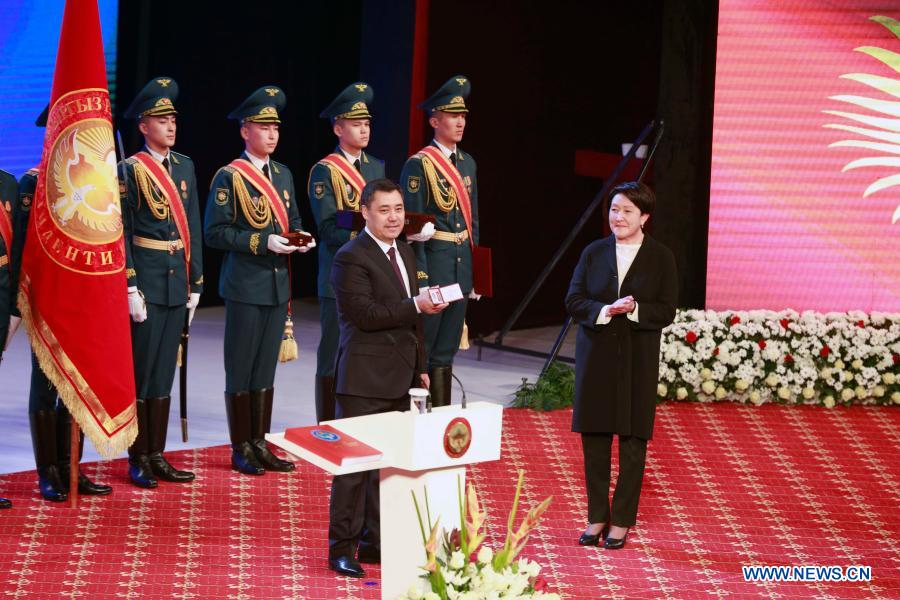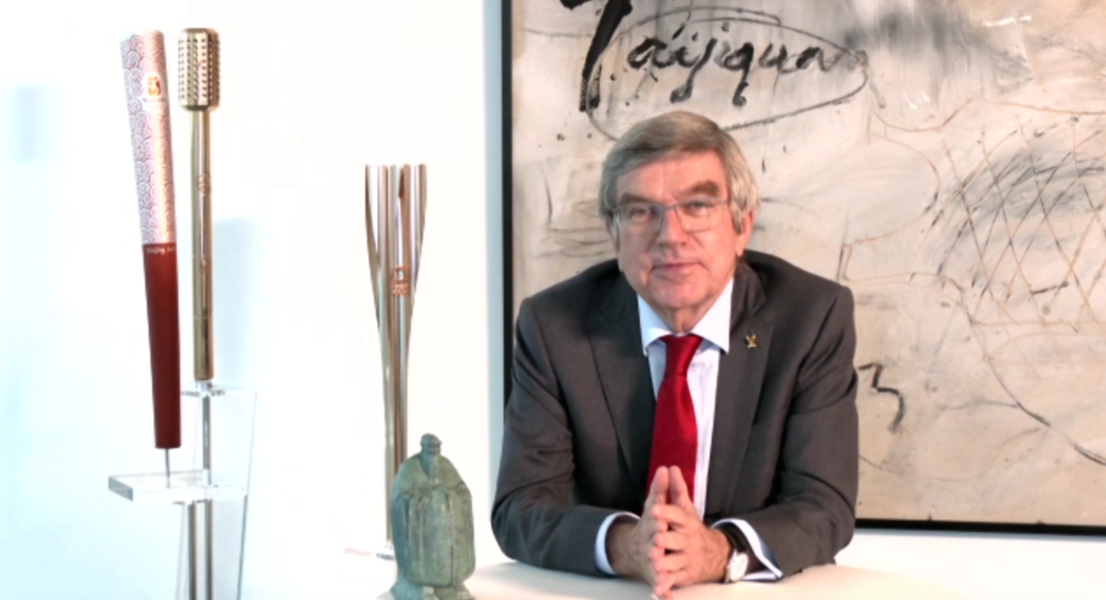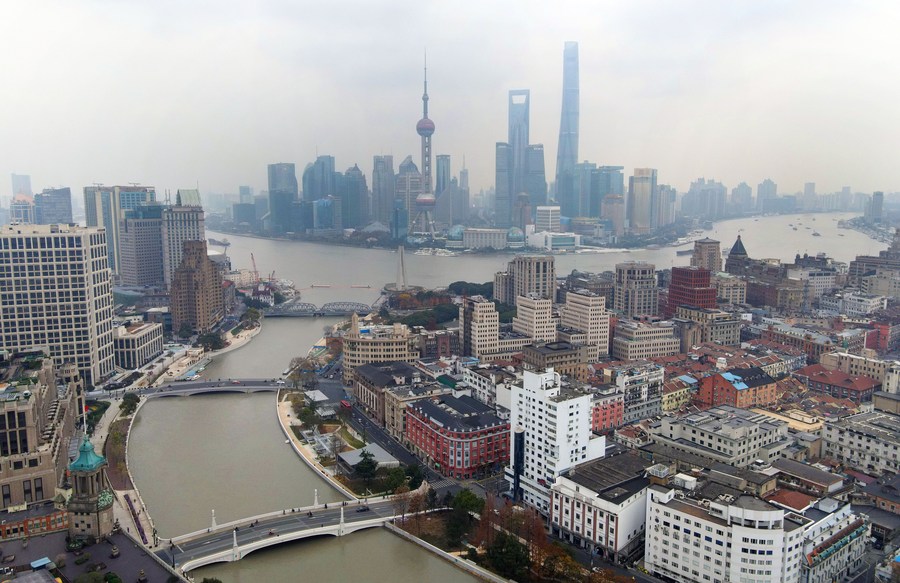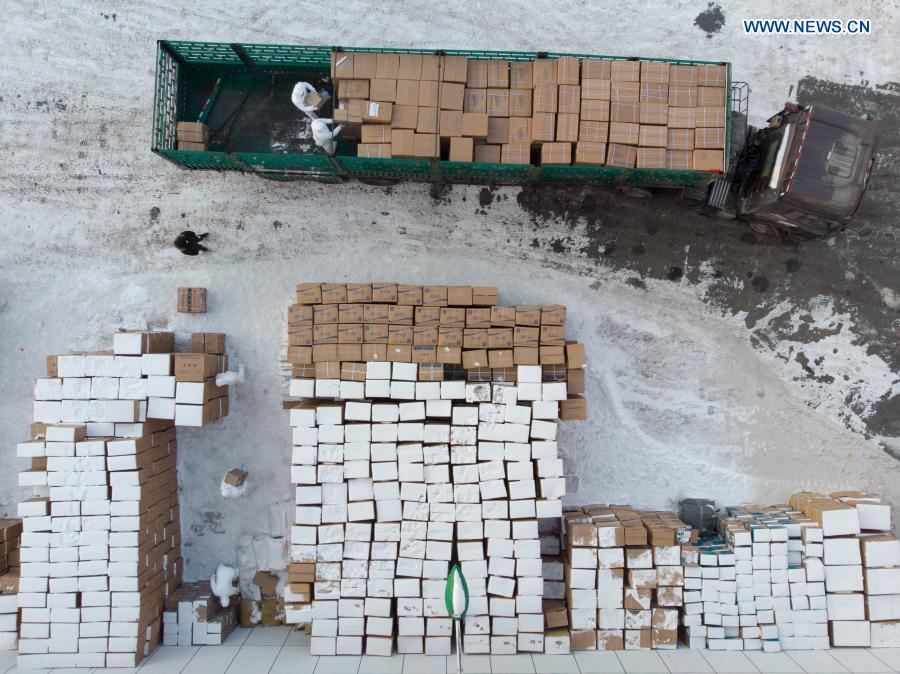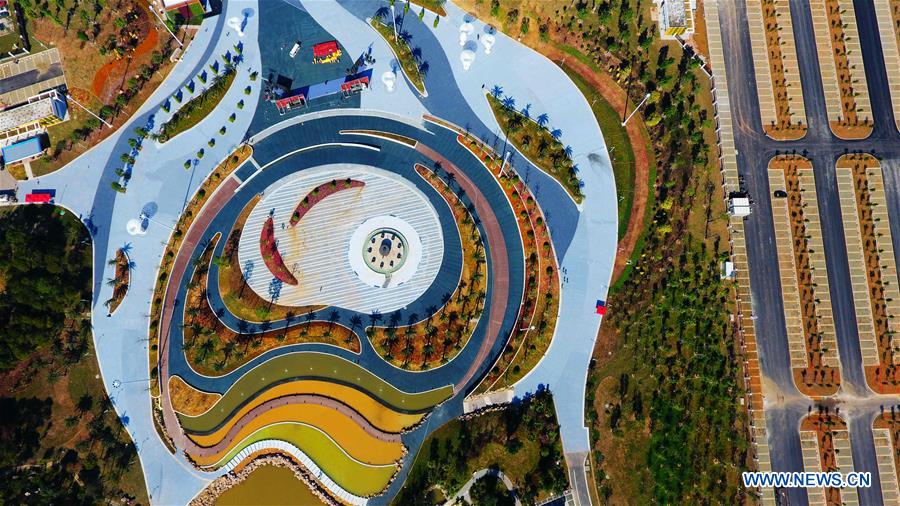-- The Hualong One reactor, with all of its core components produced domestically, has a design life of 60 years and meets the strictest safety standards in the world, according to the CNNC.
-- "With Hualong One online, China is now at the forefront of third-generation nuclear technology in the world, alongside countries like the United States, France and Russia," said CNNC Chairman Yu Jianfeng.
-- Commercial use of the reactor will help optimize China's energy structure in favor of low-carbon development.
by Xinhua writers Liu Yinglun, Gao Jing and Zhang Huaying
BEIJING, Jan. 30 -- China's first nuclear power unit using Hualong One, a domestically designed third-generation reactor, entered commercial operations, paving the way for mass construction and export.
The No. 5 unit in the city of Fuqing in east China's Fujian Province began generating electricity for sale after a seven-day trial run, said the China National Nuclear Corporation (CNNC) on Saturday.
"With Hualong One online, China is now at the forefront of third-generation nuclear technology in the world, alongside countries like the United States, France and Russia," said CNNC Chairman Yu Jianfeng.
Commercial use of the reactor would help optimize China's energy structure in favor of low-carbon development, said Yu.
SAFETY FIRST
Safety is usually a massive concern for nuclear plants, only sharpened by Japan's 2011 Fukushima disaster. The Hualong One reactor has a design life of 60 years and meets the strictest safety standards in the world.
The reactor is complete with a combination of active and passive safety systems, double containment structure, as well as resistance against damage by the equivalent of a 9-magnitude earthquake, said Ye Qizhen, an academician of the Chinese Academy of Engineering.
The passive safety system, which relies on natural forces like gravity, provides an extra safety net for the reactor when all power supplies shut down in emergencies, said Ye. The double containment structure can defend aircraft impact from outside and seal radioactive substances inside, he added.
Hualong One units can avoid nuclear leakages and quickly restart operations, even in the extreme Fukushima circumstances where an earthquake coupled with a tsunami, said Yu.
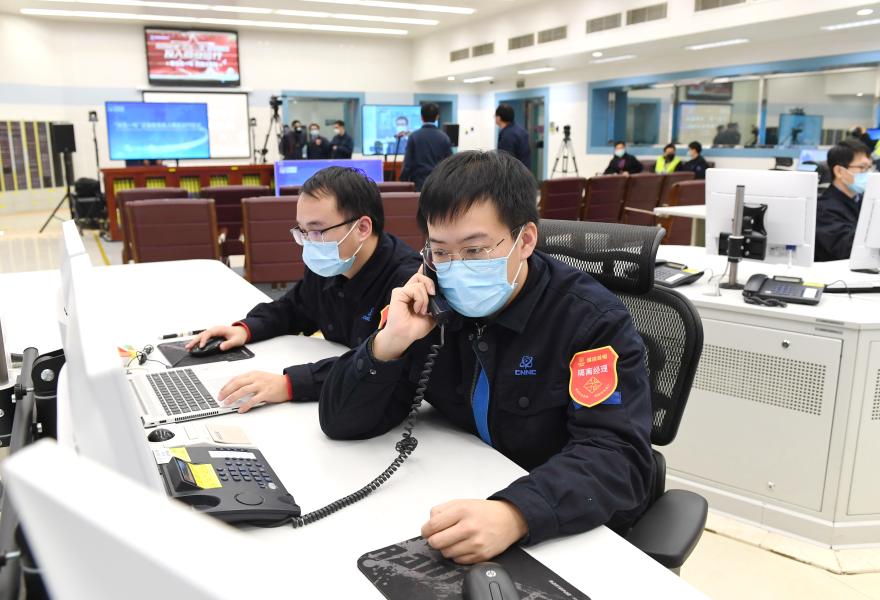
Staff members work at the control room of the No. 5 nuclear power unit in the city of Fuqing, southeast China's Fujian Province, Jan. 30, 2021. (Xinhua/Lin Shanchuan)
Hualong One's refined safety mechanisms call for delicate day-to-day maintenance. Protocols for safety tests at Mao Yuankai's department of the No. 5 unit amount to around 500 booklets, up from roughly 400 for Fuqing's previous units.
Mao, 36, is one of the 44 control room operators at the No. 5 unit. Rotating three eight-hour shifts every day, they are the constant guardians against even the tiniest chance of jeopardy.
Clad in dark navy uniforms, Mao heads a team of six in the control room above the reactor, gazing into a few dozen semi-circle screens showing the unit's status. To defuse safety risks in daily operations, they are familiar with about 5,000 booklets of protocols and thousands of different alarms.
"I need to keep studying for as long as I live to handle possible emergencies better," said Mao.
HOMEGROWN TECH
Boasting 716 national patents and 65 international ones, over 200 overseas trademarks, and 125 software copyrights, Hualong One is China's homegrown model of the safer and more efficient third-generation reactor.
Hualong One's reactor core contains 177 fuel assemblies. The idea, first conceived in the late 1990s, remains the reactor's signature innovation.
The design can increase the unit's power by 5 percent to 10 percent while making it safer, said Liu Changwen, one of Hualong One's designers.
Hualong One also extended the refueling interval to 18 months, making it more cost-effective, according to Wu Lin, former vice president of the Nuclear Power Institute of China (NPIC).

